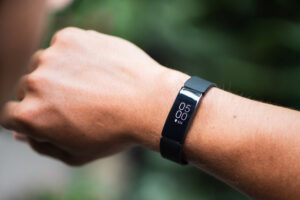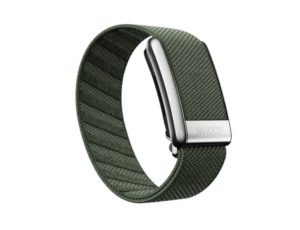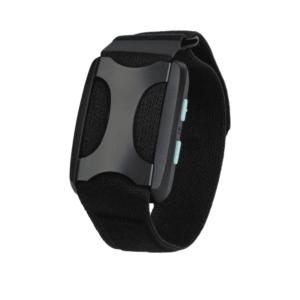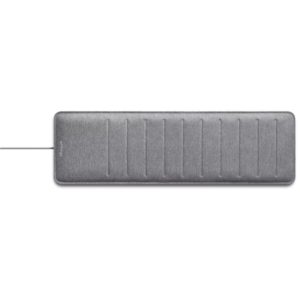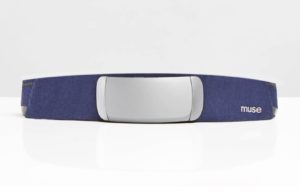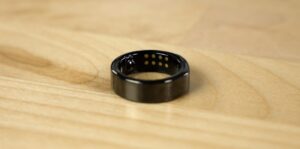How to Track Your Sleep on an Apple Watch
- The Apple Watch tracks sleep with motion and heart rate sensors to provide data about sleep duration, sleep stages, heart rate, and respiratory rate. This information can help wearers understand and improve their sleep patterns. The device also includes features to encourage better sleep and set sleep goals.
Among its many features, the Apple Watch contains a sleep tracker to help identify sleep patterns and set goals. Besides providing data on sleep history, the Apple Watch offers several additional features to encourage healthy sleeping habits. However, the device requires some setup to enable these options.
We’ll examine how sleep trackers like the Apple Watch work and discuss the benefits of collecting sleep data. We’ll then explain how the Apple Watch differs from other sleep trackers, walk you through the setup process, and highlight popular features.
How Sleep Tracking Works
Like many sleep trackers, the Apple Watch monitors sleep using a heart rate sensor and an accelerometer, which is a device that detects motion. The watch uses an algorithm developed through machine learning to analyze the information according to parameters from clinical sleep studies. It then displays the results. This data includes time spent in each sleep stage, blood oxygen level, heart rate, and respiratory rate.
By tracking sleep with the Apple Watch, wearers can assess their quality of sleep over time and take steps to improve it. However, it is important to note that while sleep trackers may help users notice problems to discuss with a doctor, consumer sleep tracking products do not diagnose sleep disorders and are not designed to replace a sleep study.
Benefits of Tracking Your Sleep
Tracking sleep can carry with it an array of potential benefits.
- Know how much you slept: Accurate measurements of sleep versus awake time give you a clearer idea of how much you actually sleep. Without a tracker, it’s difficult to estimate the exact time you fall asleep.
- Understand your sleep stages: Information about sleep stages can provide insight into the quality of sleep you get each night.
- See changing sleep habits: Looking at stored sleep data over a period of time can shed light on your sleep habits and pinpoint areas for improvement.
- Detect issues to discuss with a doctor: In some cases, long-term data may suggest a sleep problem to examine with a medical professional.
Sleep tracking is especially useful for individuals with specific goals for sleep improvement or those making lifestyle changes intended to improve their sleep quality, such as limiting caffeine intake. Tracking sleep may also appeal to people who are curious about how sleep works.
Tracking Your Sleep With an Apple Watch
The Apple Watch differs from many sleep trackers in that it was designed to be used for purposes outside of sleep and fitness. From email alerts to music streaming, the Apple Watch is highly versatile. Since wearers can download a wide array of apps, they can choose from a number of third-party sleep tracking apps and upgrades, all of which offer unique features.
However, the Apple Watch does not track sleep automatically. You’ll need to set it up and link it to your phone. Once you’ve turned on sleep tracking, you’ll also need to ensure your watch fits properly each night to collect accurate data. Since the Apple Watch tracks sleep partly based on motion, we suggest wearing the watch with a comfortable fit that is not too loose in order to avoid recording extraneous movement.
Check Your Software
To get more out of the sleep tracking features, make sure you are using an up-to-date operating system. Apple Watches should have watchOS 7 or later, while iPhones should have iOS 14 or later. However, for Apple’s most advanced sleep tracking, users need watchOS 9 and iOS 16 or later.
To update the operating system on your Apple Watch or iPhone, follow these steps:
- Make sure you are connected to Wi-Fi.
- Open the Settings app.
- Tap General.
- Tap Software Update.
- If a software update is available, tap Install. Follow any onscreen instructions.
Create Sleep Goals
The Apple Watch allows you to set a sleep goal, which is simply the number of hours you want to sleep each night.
To set a sleep goal, follow these steps:
- Open the Health app on your iPhone linked to the Apple Watch.
- Tap Browse in the bottom right corner.
- Scroll down, and tap Sleep.
- Scroll down under the heading Set Up Sleep, and tap Get Started.
- Tap Next.
- Set your sleep goal.
After you’ve inputted your goals, you can also set a time for Wind Down, which is intended to reduce distractions and promote relaxation before your scheduled bedtime. By activating this setting, you’ll receive a reminder before your scheduled bedtime to start winding down and preparing for sleep. You can also add shortcuts to apps you want to use during this period, such as sleep and meditation programs.
Set Your Sleep Schedule on Your Phone
In the same setup menu that you use to enable Sleep Goal and Wind Down, you’ll find the Sleep Schedule function. This lets you set a bedtime and wake-up time based on custom schedules. For example, if you want to wake up at 6 a.m. every weekday but 8 a.m. on weekends, you would create one schedule for weekdays and another for weekends.
You can add as many schedules as you want. To change the information in any of your schedules, just tap Edit under the schedule you want to adjust. The app suggests times based on your sleep goals, but you can override its recommendations.
With the Edit button, you can also choose whether to activate the alarm for each schedule. If activated, your alarm goes off at your chosen wake-up time.
Next Wake Up Only
This feature allows you to change the time for your next scheduled wake-up without permanently affecting any of the schedules you’ve set.
In the Sleep category of the Health app, your next scheduled wake-up time is displayed under the Your Schedule heading. By tapping the Edit button, you can adjust the bedtime and wake-up time for what Apple calls Next Wake Up Only.
Turn On Track Sleep With Your Apple Watch
To turn on the Track Sleep setting on your Apple Watch, there are two options. First, if your watch is already paired with your iPhone, you can open the Health app on your iPhone and tap Sleep. The Set Up Sleep option displays prompts to walk you through the process.
If you set up the Sleep functions on your iPhone before pairing it with your Apple Watch, follow these steps:
- Open the Watch app on your iPhone and tap My Watch.
- Tap Sleep.
- Tap Track Sleep with Apple Watch.
Track Sleep must be enabled for at least four hours a night to receive data. It’s also useful to turn on the Charging Reminders function since the Apple Watch must be charged to collect information. Charging Reminders display a notification to charge your Watch before your Wind Down time. You can turn them on in the Sleep section of the Watch app on your iPhone.
Try Using Sleep Focus
Sleep Focus is designed to help users avoid distractions right before and during sleep. It can simplify your lock screen and limit notifications based on your inputted preferences. It also alerts people who try to message you that you have notifications turned off, but it gives them the option of notifying you anyway.
This feature may be ideal for light sleepers or those trying to cut down on screen time before bed. Apple also allows you to sync this feature with the Sleep Schedule function so that Sleep Focus automatically turns on at your scheduled Wind Down or bedtime and turns off at your wake-up time.
To adjust the settings for which notifications you receive during Sleep Focus, follow these steps:
- Tap Settings from the home screen.
- Tap Focus.
- Tap Sleep.
Set Your Sleep Schedule on Your Watch
To set the Sleep Schedule directly on the Apple Watch instead of the iPhone, follow this process:
- Open the Sleep app on your Apple Watch.
- Tap Full Schedule. Here, you can add a new schedule or edit existing schedules.
- To choose the days for the schedule, tap Active On. Then, choose the days you want for this particular sleep schedule.
- To adjust your wake-up and sleep time, tap Wake Up or Bedtime
- Turn the digital crown on the side of the watch to adjust the time, then tap the check mark.
To turn a Sleep Schedule off or on, tap Full Schedule in the Sleep app, and then tap the digital switch next to Sleep Schedule.
Next Wake Up Only
You can also adjust the Next Wake Up Only function directly through your Apple Watch.
- Open the Sleep app on the watch.
- Tap your next bedtime.
- Tap the wake-up time.
- Adjust the time by turning the digital crown, then tap the check mark.
Reviewing Your Sleep History
To review your sleep data, go back to the Sleep section of the Health app on your iPhone. A graph with your daily sleep duration appears at the top. Just above that, you can tap D to view the daily information, W for weekly, M for monthly, or 6M to see a chart of the last six months of data.
To review more details, including sleep stages, sleep duration averages, heart rate, and respiratory rate, tap Show More Sleep Data at the bottom of the chart. With this data, Apple Watch owners can observe their sleep patterns over time to adjust habits or set goals accordingly.

